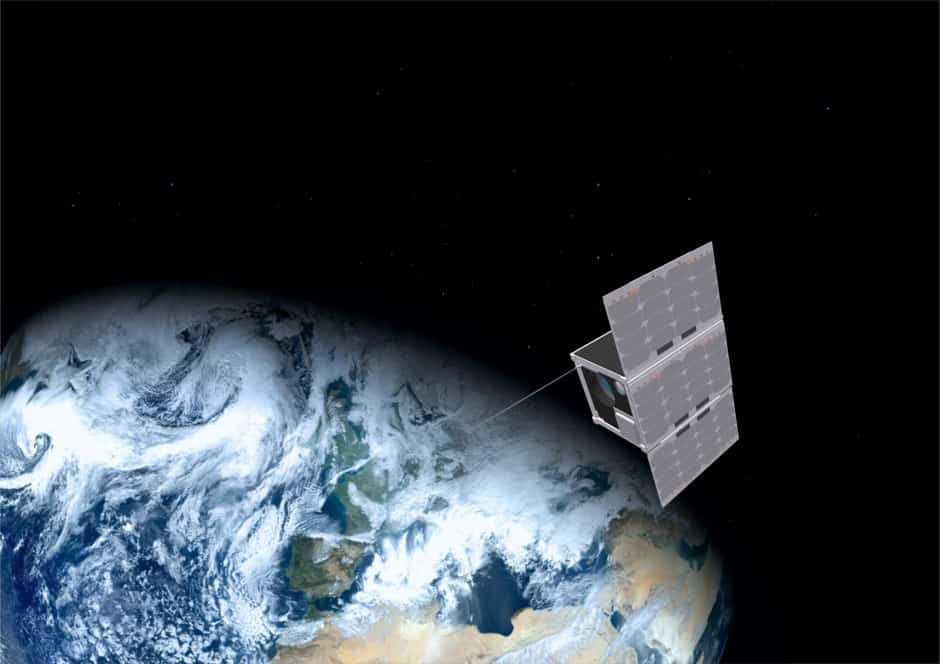Announced at the Berlin Air Show, the GESTRA and TIRA surveillance radar systems respectively scan large areas of space to detect objects and debris in low earth orbit, and produce detailed images of individual objects and measure their trajectories.

The two radar systems are part of a suite of technologies unveiled at the airshow. These are intended to counter the growing problem of “space junk”: defunct satellites, fragments of discarded launch equipment such as fairings and launch stages, and fragments of micro-meteorites that orbit in a cloud around the earth at an altitude of around 3000km. There is now so much debris in these orbits that there is a risk of a chain collision; two objects collide and break apart, and then their fragments cause further collisions and so on. Satellites must now be fitted with equipment to deorbit them at the end of their life, and a mission will soon begin from the International Space Station to test technologies to capture and destroy items of debris, but finding ways to avoid the rubbish is also a priority for many in the space industry.
GESTRA and TIRA were developed at the Fraunhofer Institute for high-frequency physics and radar techniques, based in Wachtberg, Germany. Based on a phased array principle, which works by pooling radiation energy from individual antennae, GESTRA can track an object while simultaneously scanning for more objects. Ground-based, it can be transported using a standard heavy goods vehicle and is intended to be installed in the German city of Koblenz, where it will be connected to the German armed forces space situational awareness centre in western Germany and operated by remote control.
TIRA, by contrast, is mounted on satellites and provides more precise information about the size, shape and possible damage that might be caused by fragments of debris. Up to now, information on debris has come from US orbit catalogues, but since NASA does not disclose all of its data, the German DLR space administration entrusted Fraunhofer with a project of providing Europe with a means to access its own measurement data.
“GESTRA monitors the expanses of space to establish whether – and indeed how many – objects there are. TIRA can then produce an image of the individual objects, enabling them to be analysed in more detail,” said Jens Fiege, head of Internal and External Communications at Fraunhofer FHR. Moreover, with its sensitive antennae, TIRA can detect objects from just a few centimeters in size and larger, enabling it to measure their trajectories with high levels of precision.
These systems will be supplemented by PIRAT, a software suite developed by the Fraunhofer Institute for high-speed dynamics (Fraunhofer EMI), which uses the flight path of the planned mission and particle impacts to be expected in that region to calculate whether the satellite design or individual components would withstand a collision.
“PIRAT makes it possible to determine the failure probability of individual components – even inside the satellite – if a piece of space junk pierces the external wall upon collision and spreads out as a cloud of fragments,” said Dr Martin Schimmerohn from Fraunhofer EMI. “Through the clever placement of components and the adding of thin protective layers, you can find a safe design with minimum impact on the overall system.”
Meanwhile, Fraunhofer EMI has also developed ERNST, a small satellite that is lightweight, manouevrable, reliable and versatile to reduce development time and costs for satellite missions. ERNST consists of 12 units locked together in a unit about the size of a shoebox, designed to fit into the standard transport container used to carry small satellites in launch vehicles. The 12 small satellites are designed to be interconnected in a constellation to provide a similar functionality to a larger and more expensive satellite.
When first launched in 2021, ERNST will carry an infrared camera for Earth observation, mounted on an optical bank manufactured using metallic 3D printing technology. Previously largely eschewed for space applications because of safety and quality assurance concerns, the ERNST optical bank would provide a test platform to demonstrate 3D printing and allow the space industry to take advantage of its design freedom and short production times.




Glasgow trial explores AR cues for autonomous road safety
They've ploughed into a few vulnerable road users in the past. Making that less likely will make it spectacularly easy to stop the traffic for...